Montessori trays: the silent teacher in your playroom
Sometimes an activity fails and you can't work out why. The problem isn't the activity - it's how you present it. Discover how Montessori trays act as silent teachers, gently guiding your child toward focus, order, and deep engagement.
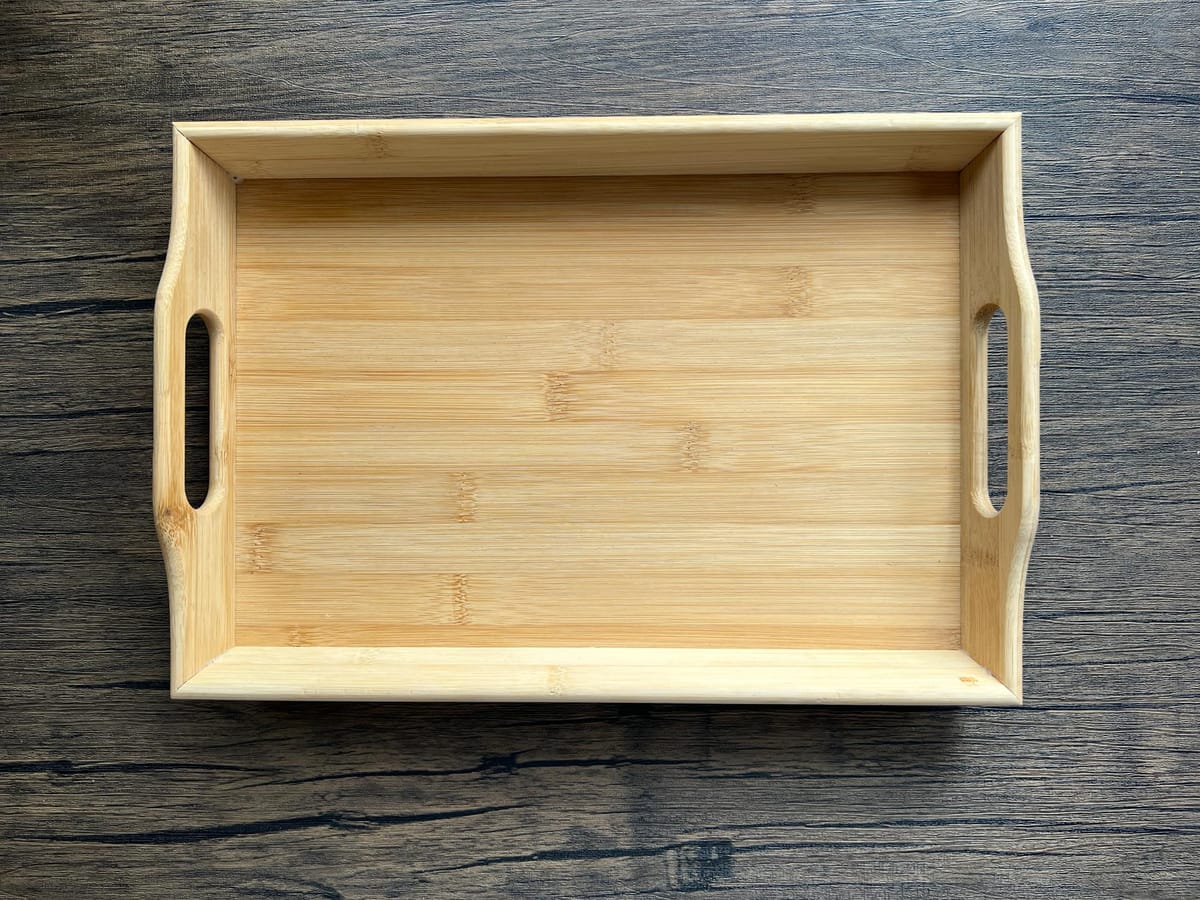
Sometimes an activity goes wrong and you can’t work out why.
Jugs and beakers, funnels and hosepipe. It’s water play heaven but your child walked away.
Why? There was so much more to explore.
Sometimes the problem isn’t the activity - it’s how you present it.
Next time try introducing some constraints: offer fewer materials; put them on a tray; let your child choose when and whether she plays.
And when it’s all finished, watch as your child happily tidies it all away.
Sounds too good to be true?
Not if it’s a Montessori tray.
What makes Montessori trays so effective?
Montessori trays might look simple, but they serve a far bigger purpose than just holding materials. They are tools for independence, order, and focus - helping your child engage with activities deeply and calmly.
Here’s how Montessori trays work their magic:
1. They keep all the materials for a single activity together
At its most basic, a Montessori tray keeps everything your child needs in one place. This means:
- There is no need for you to step in and help.
- Your child can begin and complete the activity independently.
For example:
- A pouring activity tray might include two small jugs and a cloth for spills.
- A threading activity might contain a bowl of beads and a length of string.
Everything has a place, and everything is ready to use.
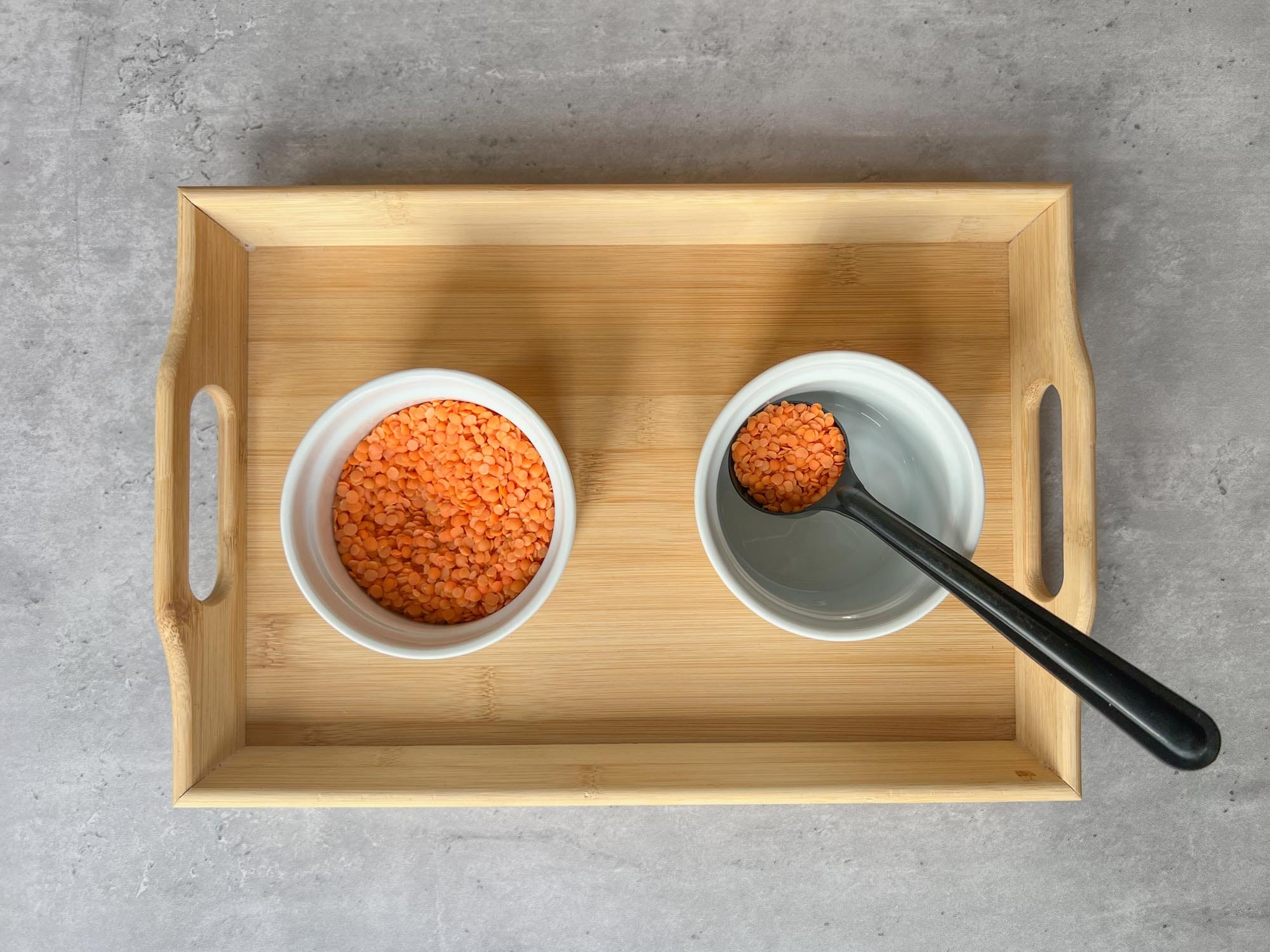
2. They support your child’s sense of order
Montessori classrooms value order - not just because it looks tidy, but because it supports a child’s development. When you present materials neatly on a tray, you show your child how to organise her space and care for her things.
- Visual order. Seeing materials arranged neatly on a tray signals to your child what to do and how to start.
- Physical order. The tray creates a space for everything, making it easy for your child to return items to where they belong when she finishes.
This helps your child develop independence, responsibility, and focus.
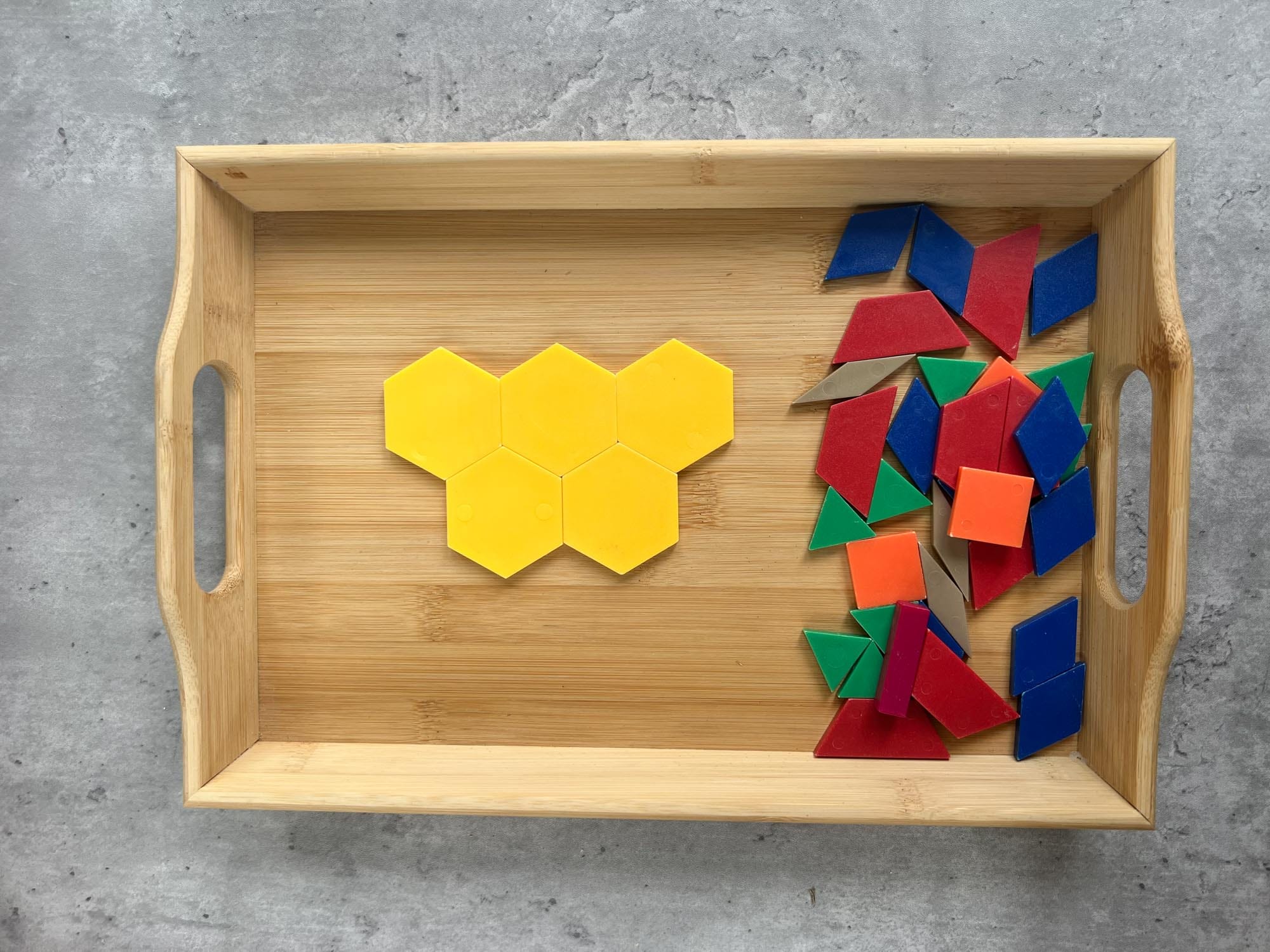
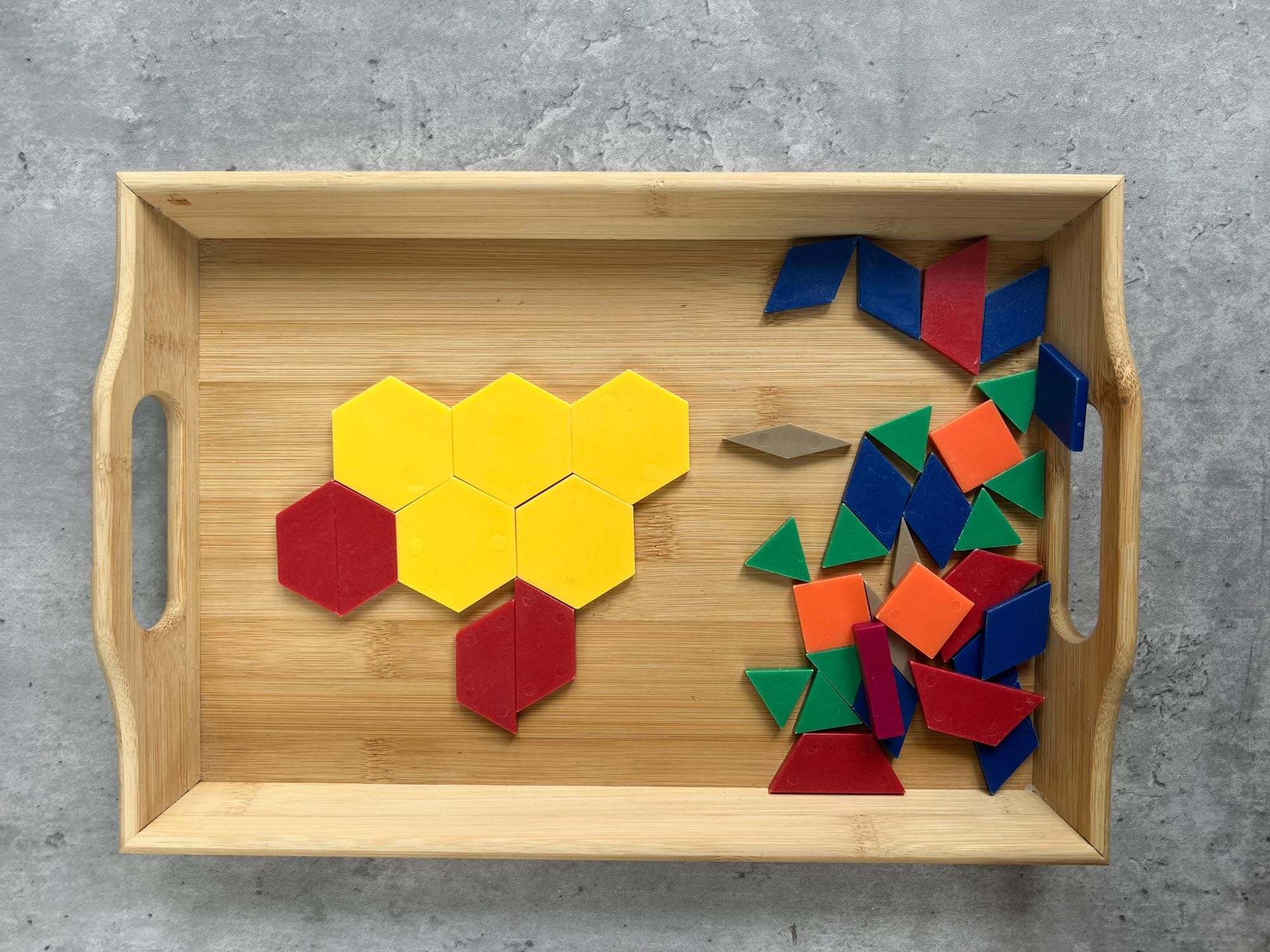
3. They define and contain the activity space
Have you noticed how your child’s work can spread across the room when she plays? A tray creates a boundary, helping her focus on the task at hand.
- Focus and concentration. The activity stays contained within the tray, reducing distractions.
- A clear beginning and end. When everything is in one place, your child knows exactly when the activity is finished, which gives her a sense of accomplishment.
4. They make activities portable and accessible
Trays allow your child to choose her work and carry it to wherever she wants to play - whether that’s a table, a floor mat, or a quiet corner.
This portability reinforces independence. Your child is free to take charge of her learning: selecting, carrying, and packing away her own work.
5. They isolate and highlight a single concept or skill
Montessori trays are designed to focus on one clear learning objective at a time. By isolating skills, the tray helps your child concentrate and engage deeply.
For example:
- A tray for transferring objects with tweezers focuses on fine motor control.
- A tray for counting beads highlights number recognition and quantity matching.
When your child can focus on one skill at a time, she feels confident to explore and master it before moving on.
6. They encourage independence and self-correction
Many Montessori tray activities are self-contained and allow your child to identify and correct her own mistakes. This builds resilience, problem-solving skills, and confidence.
The big idea
Montessori trays are not just about keeping materials together - they are a tool for learning, independence, and focus. By presenting activities on a tray, you help your child:
- work independently. She can carry, complete, and pack away her work without help.
- develop a sense of order. The tray shows her where everything belongs.
- build concentration and confidence. A defined space reduces distractions and encourages focus.
In a Montessori environment, the tray itself becomes a silent teacher, helping your child explore, organise, and succeed in her own time.
So next time you set up an activity, try placing everything on a tray. You might be surprised at how much it changes.
Your child will not just play - she will engage, focus, and thrive.
Setting up successful trays
Start with these principles:
One clear purpose. Each tray should focus on a single skill or concept. For a young child, this might be:
- Pouring from one small jug to another
- Transferring objects with tongs
- Matching simple shapes or colours
Everything needed, nothing extra. Include exactly what your child needs - no more, no less. For a pouring activity:
- Two small jugs
- A cloth for spills
- A workspace mat
Beautiful and inviting. Use materials that appeal to your child:
- Natural materials where possible
- Colours that complement each other
- Clean, well-maintained items
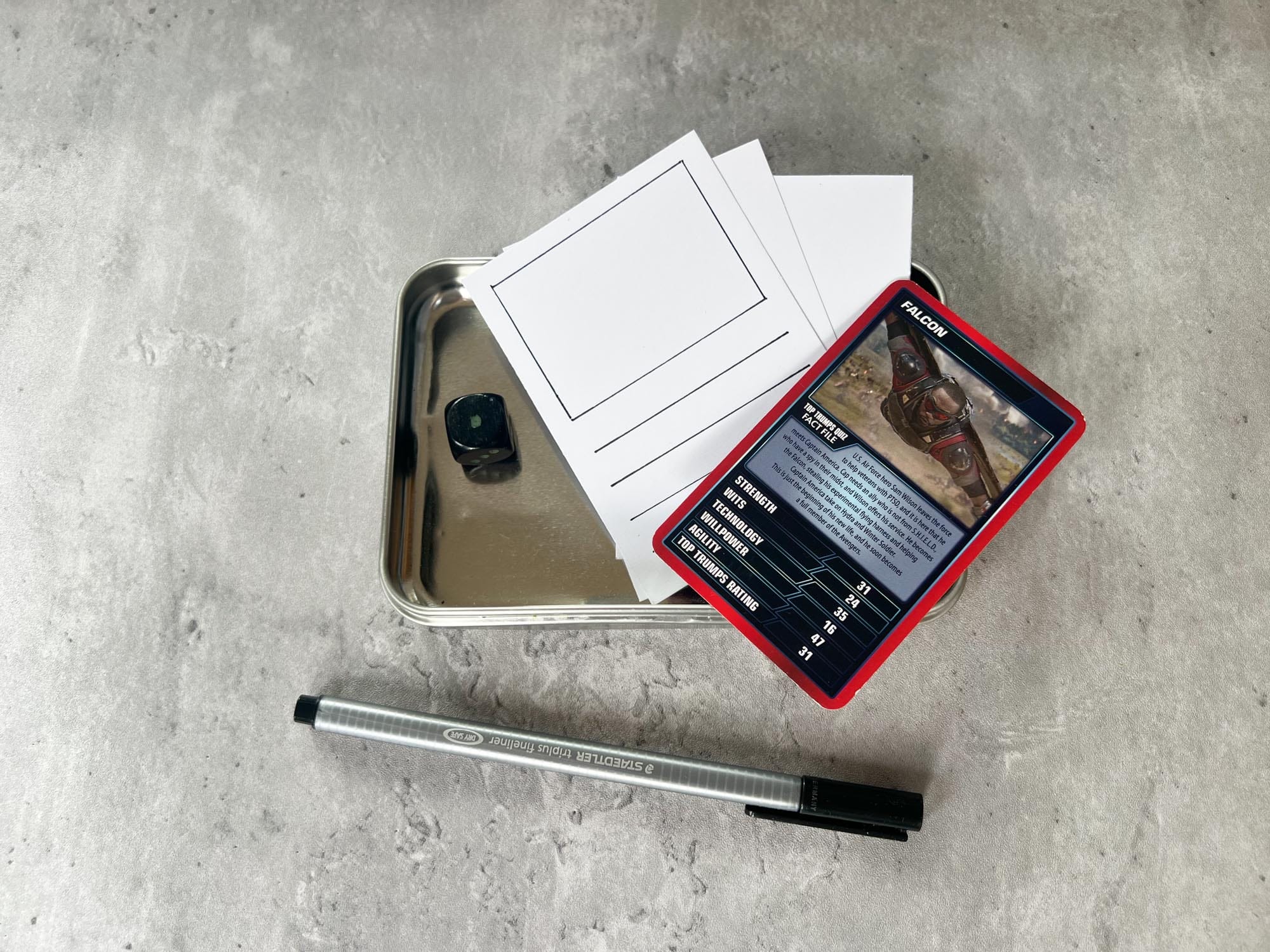
From Montessori trays to Play Kits: a natural progression
As your child grows, you'll notice her ready for more challenge. She might:
- Complete tray activities quickly and confidently
- Combine materials in creative ways
- Ask for more complex activities
- Show interest in open-ended projects
This is when you know she's ready to transition to Play Kits - self-contained collections of materials that support longer, more complex play.
The skills she developed through Montessori trays - focus, organisation, independence - become the foundation for deeper engagement with Play Kits.
Starting your tray journey
Begin with one simple tray:
- Choose an activity your child can almost do independently
- Arrange materials clearly and beautifully
- Place the tray where your child can see and reach it
- Step back and observe
Remember: Montessori trays are not about creating Instagram-worthy setups. They're about giving your young child the structure she needs to develop independence.
When you provide just enough support - not too much, not too little - you help your child build the skills she needs for a lifetime of independent play.
What simple activity could you arrange on a tray today?
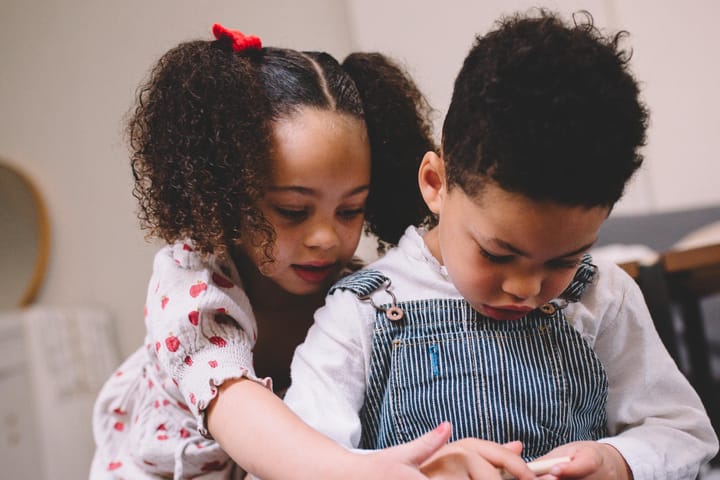
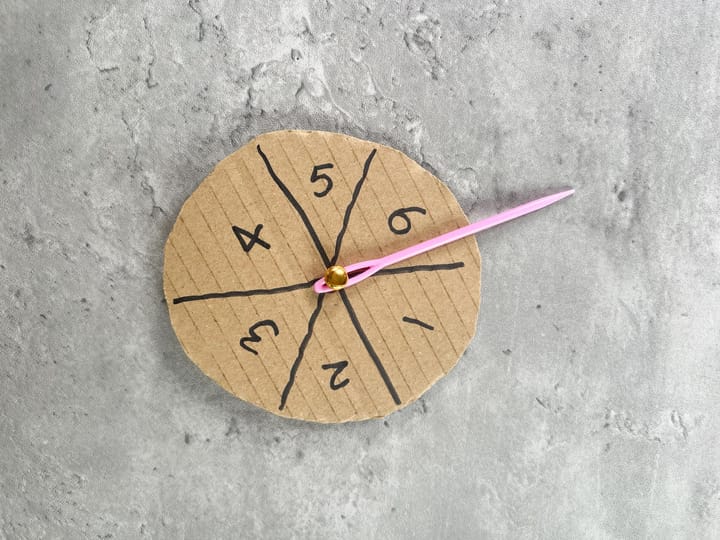
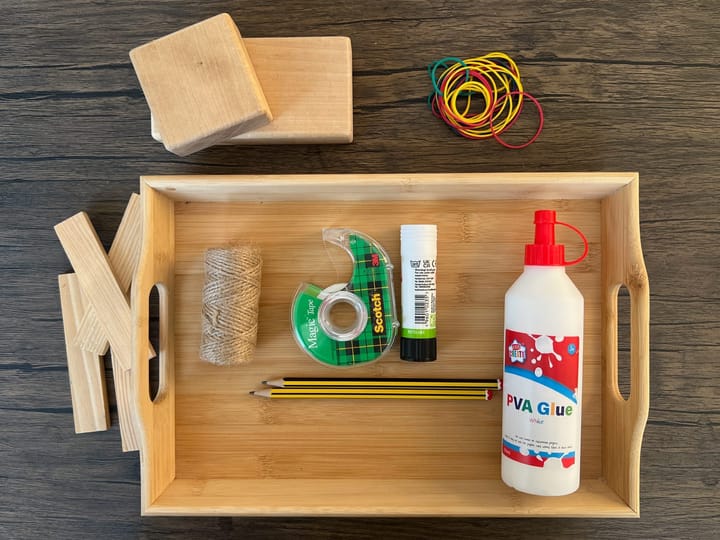
Comments ()